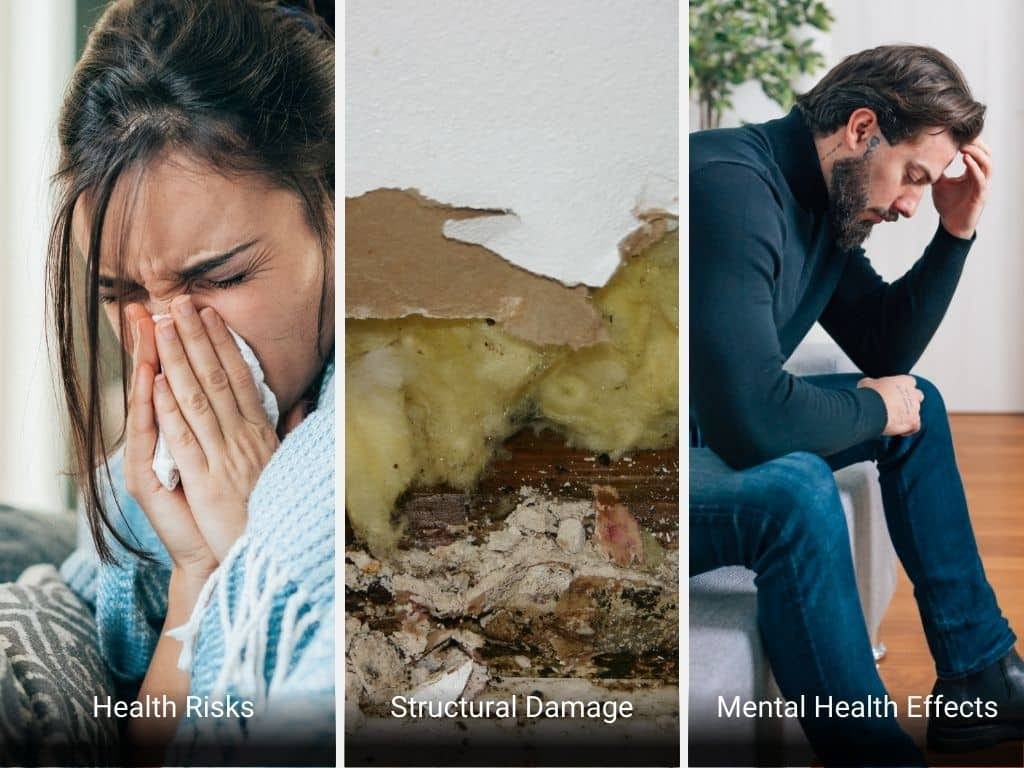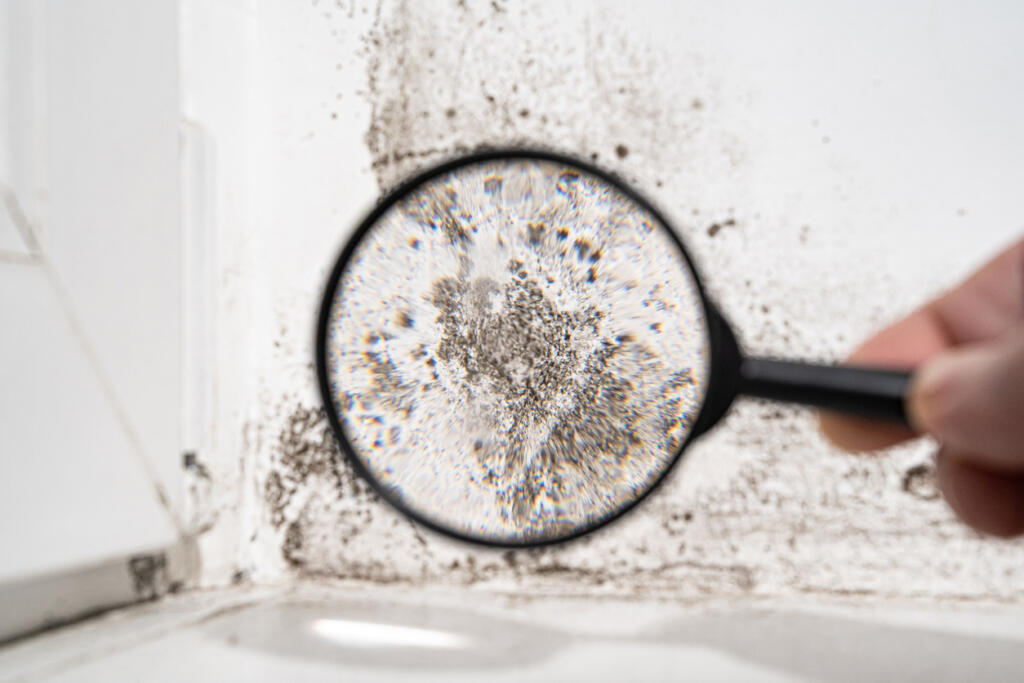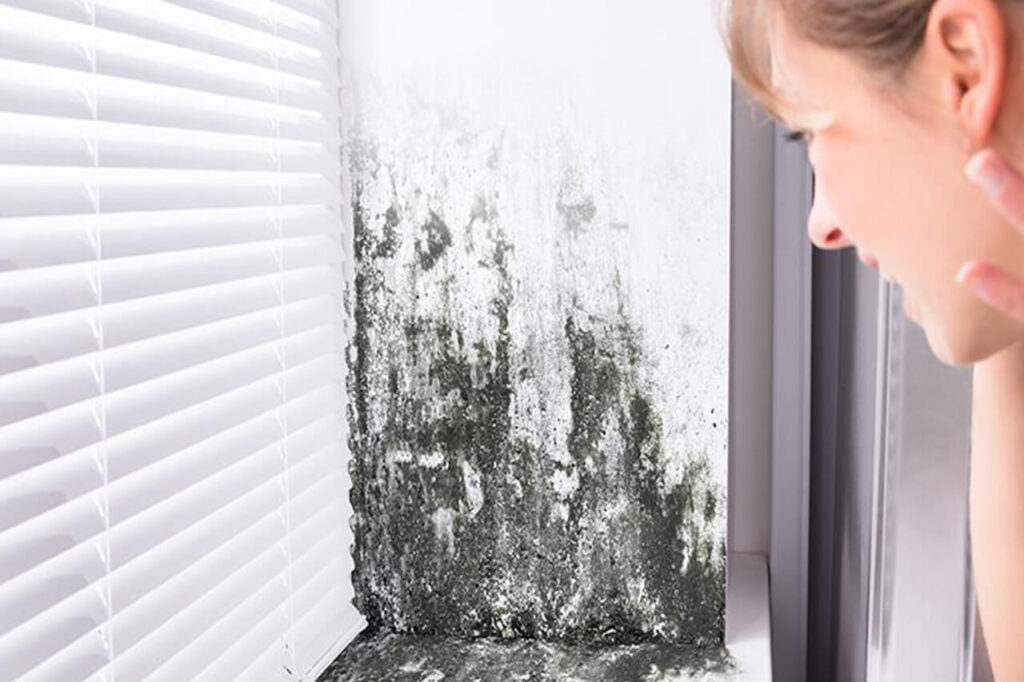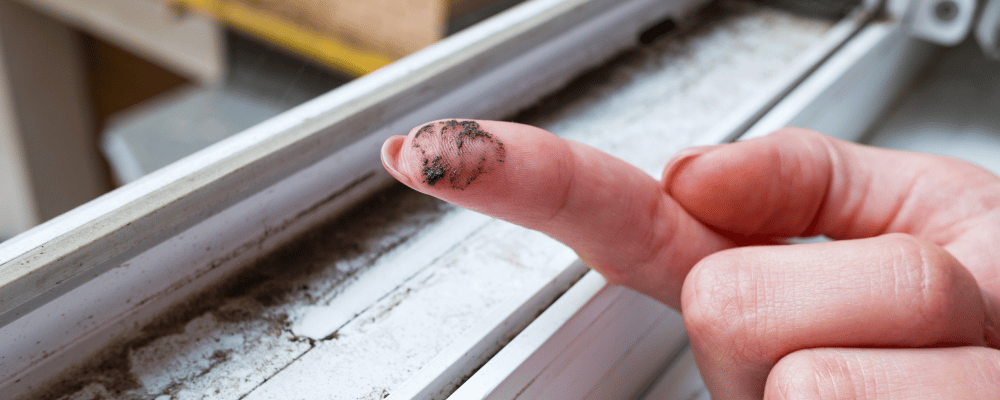Harm to humans from mold on windows is often underestimated but can lead to significant health issues, especially for those with respiratory conditions or mold allergies. Mold on windows typically develops in damp environments where condensation, poor ventilation, and high humidity create favorable conditions. This article covers the health risks of mold exposure, common symptoms, and effective prevention techniques to minimize mold growth on windows.
1. Health Risks of Mold on Windows
Mold on windows releases spores into the air, which can impact indoor air quality and pose health risks. Some of the common health risks associated with mold exposure include:
- Respiratory Problems: Breathing in mold spores can irritate the respiratory system, causing symptoms like coughing, shortness of breath, and even chronic bronchitis in severe cases.
- Allergic Reactions: People sensitive to mold may experience allergic reactions such as sneezing, runny nose, and skin irritation.
- Asthma and Breathing Issues: Mold can trigger asthma attacks and worsen symptoms in people with respiratory conditions.

2. Symptoms of Mold Exposure
Recognizing the symptoms of mold exposure is crucial, especially in homes with visible mold growth on windows. Common symptoms include:
- Itchy or Watery Eyes: Mold spores in the air can irritate the eyes, causing redness and itchiness.
- Nasal Congestion: Inhaling mold spores often leads to nasal congestion, sneezing, and a runny nose.
- Headaches and Fatigue: Prolonged exposure to mold may cause headaches and feelings of fatigue.
These symptoms may vary in severity depending on an individual’s sensitivity and exposure duration.
3. Respiratory Issues from Mold on Windows
Mold on windows is a common cause of respiratory issues for those exposed to it regularly. When mold spores are inhaled, they can cause inflammation in the airways, leading to respiratory symptoms such as wheezing, coughing, and shortness of breath. Those with asthma or other respiratory conditions may experience more severe reactions, with mold exposure acting as a trigger for asthma attacks.

4. Allergic Reactions to Mold Spores
Allergic reactions are among the most common responses to mold exposure. Allergic symptoms often include sneezing, itchy eyes, and skin irritation. People with mold allergies may experience these symptoms even with minimal exposure to mold spores, especially in enclosed spaces like rooms with moldy windows.
5. Long-Term Health Effects of Mold Exposure
The long-term effects of mold exposure can be significant, particularly with prolonged exposure to mold on windows. Over time, mold exposure can weaken the immune system, making the body more susceptible to respiratory infections. In extreme cases, chronic exposure may lead to serious health issues like chronic sinusitis, respiratory infections, and chronic fatigue.
6. Indoor Air Quality and Mold Spores
Mold growth on windows impacts indoor air quality, as mold spores become airborne and are easily inhaled. Poor indoor air quality due to mold can lead to ongoing health issues, especially for young children, the elderly, and individuals with respiratory or immune system vulnerabilities.
7. Skin Irritation and Eye Irritation from Mold
Some individuals experience skin irritation and eye irritation when exposed to mold spores. This may include symptoms like rashes, itching, or watery eyes. Mold spores can irritate the skin upon contact and can worsen skin conditions like eczema in sensitive individuals.
8. Headaches and Fatigue from Mold Exposure
Prolonged exposure to mold can cause headaches and fatigue. Mold releases mycotoxins, which can affect the central nervous system and lead to symptoms like dizziness, headaches, and chronic fatigue, which can impact daily life and productivity.
9. Preventing Mold Growth on Windows
To reduce the harm to humans from mold on windows, it’s essential to prevent mold growth in the first place. Here are some effective prevention tips:
- Lower Indoor Humidity: Use a dehumidifier to keep humidity levels below 50%, which discourages mold growth.
- Ensure Proper Ventilation: Open windows or use exhaust fans to improve air circulation.
- Regular Cleaning: Clean window sills and frames regularly to prevent mold buildup.
- Seal Windows Properly: Repair any leaks or cracks in window seals to prevent water from entering.

Comparison Table: Window Materials and Their Resistance to Mold
Selecting the right window material can help reduce mold growth by offering better moisture resistance. Below is a comparison of common window materials and their effectiveness in resisting mold:
| Window Material | Mold Resistance | Durability | Maintenance | Best Use |
|---|---|---|---|---|
| Vinyl | High | High | Low | Cost-effective and ideal for areas with high humidity due to its mold resistance |
| Wood | Moderate | Moderate | High | Adds aesthetic appeal for traditional homes but requires regular sealing to prevent mold |
| Aluminum | Moderate | High | Low | Durable and suited for modern designs but may allow condensation |
| Fiberglass | Very High | Very High | Low | Excellent choice for mold resistance, ideal for humid or energy-efficient homes |
Material Recommendations:
- Vinyl: Provides excellent mold resistance and requires minimal maintenance, making it a good choice for humid environments.
- Wood: Aesthetic appeal but requires regular sealing to prevent moisture retention and mold.
- Aluminum: Durable but may lead to condensation buildup if not insulated well.
- Fiberglass: Offers superior mold resistance and insulation, ideal for reducing moisture buildup.
Conclusion
The harm to humans from mold on windows can have a substantial impact on health, particularly for those with respiratory conditions or mold sensitivities. From respiratory issues and allergic reactions to long-term health effects like chronic sinusitis and fatigue, mold exposure presents numerous risks. Preventing mold through regular cleaning, proper ventilation, and selecting mold-resistant window materials can help maintain a healthier indoor environment. Taking proactive steps to prevent and remove mold on windows is essential for preserving air quality and ensuring a safe, comfortable living space.


